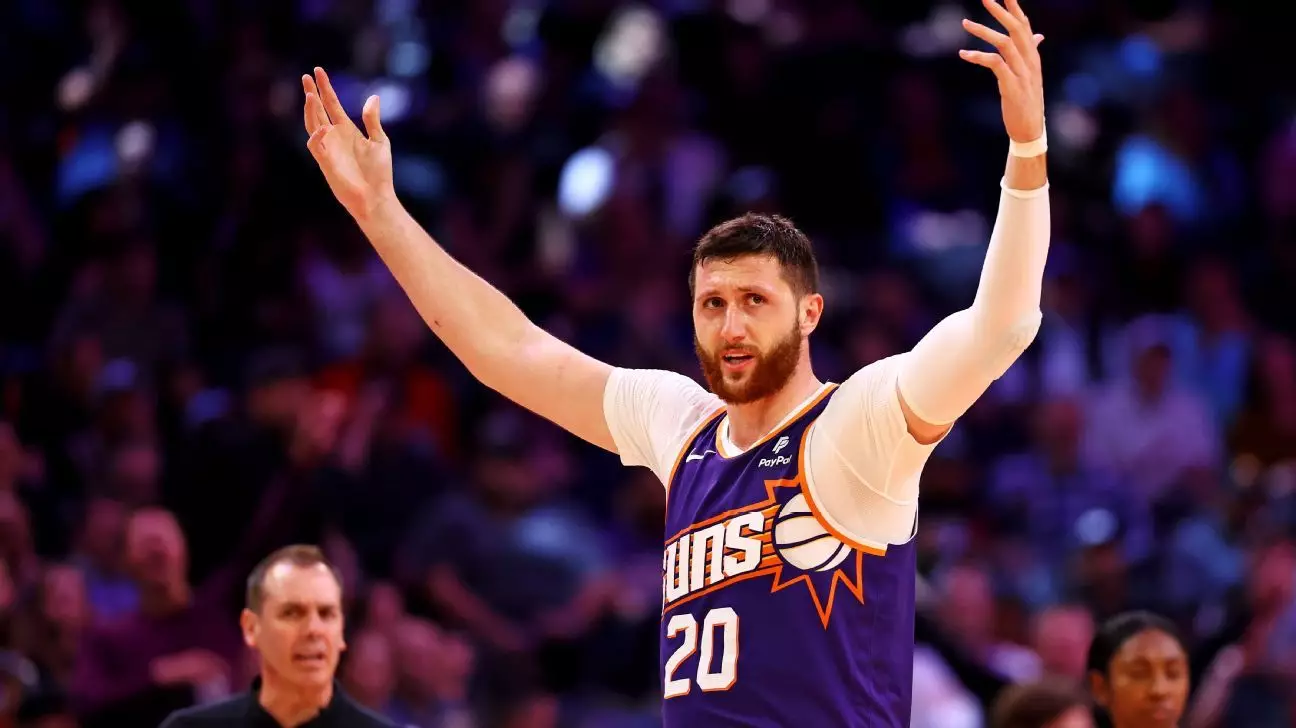In the high-stakes environment of the NBA, relationships between players and coaching staff are pivotal in leveraging team success. Recently, center Jusuf Nurkic has publicly expressed his discontent regarding his relationship with Phoenix Suns coach Mike Budenholzer, describing it as effectively nonexistent. The lack of communication, with no meaningful dialogue in over two months, has left Nurkic feeling sidelined, both literally and figuratively. When athletes find themselves in such situations, it often leads to a demoralizing spiral that can affect their performance, mindset, and overall contribution to the team.
Nurkic’s frustration stems from being relegated to the bench after starting 23 games earlier in the season. He has not seen the court since January 7, indicating a lack of trust from the coaching staff in his current capabilities. His comments reflect a sentiment of bewilderment, as he remarked about not being informed prior to a significant game against the Atlanta Hawks, underscoring a breakdown in communication that every professional sports team should strive to avoid.
As the season progressed, the dynamics within the Suns have shifted, particularly concerning the center position. With Nurkic’s average of 8.6 points and 9.2 rebounds, it appears Budenholzer has opted to explore other lineups, including the introduction of Mason Plumlee into the starting role. Nurkic’s assertion of being professional amidst these transitions speaks volumes of his character; however, it also highlights a larger issue—an apparent disconnect between player expectations and coaching strategy.
Professional athletes thrive on feedback and affirmation of their roles on the team. Nurkic’s assertion that “it’s hard to understand why” he was benched hints at a broader struggle all players face when their livelihoods depend on performance metrics outside their control. This situation is exacerbated by the fact that Nurkic previously experienced a similar pattern during his time with the Denver Nuggets, further complicating his state of mind.
With Nurkic on the sidelines, Budenholzer has turned to alternative talents, including newly-acquired center Nick Richards and rookie Oso Ighodaro, both of whom have made significant contributions recently. Nurkic’s acceptance of the evolving rotation signals an understanding of the competitive nature of the NBA. However, the reality checks he faces as a player transitioning to a secondary role could dim his prospects for confidence and future playing time.
Despite the setbacks, Nurkic remains hopeful about his future with the Suns, conveying a readiness to adapt should the circumstances change. His statement regarding the potential for another opportunity if traded reflects wisdom; it’s a sentiment that acknowledges both the fleeting nature of professional basketball careers and the inevitability of change within the league.
As the February 6 trade deadline approaches, Nurkic’s uncertain status with the Suns raises questions about what his future may hold. His history with the team suggests he has much to offer, particularly given his past performance, where he averaged 10.9 points and 11 rebounds in 76 games. With other teams likely scrutinizing his potential, Nurkic’s situation will attract attention. Whether he remains with the Suns or finds himself elsewhere, the constant threat of trade keeps players like Nurkic vigilant and ever-prepared.
Feeling overlooked is a common experience for players navigating through complex team dynamics. Nurkic’s story serves as a cautionary tale about communication, relationship building, and the importance of fostering a supportive environment. As he continues to approach this tumultuous chapter of his career with professionalism and readiness, it remains essential for those in leadership positions to recognize the inherent value in every athlete, potentially preventing further disconnects in highly competitive settings like the NBA.
In every setback, there’s a chance for growth and resilience—a mindset that Nurkic appears to embody as he remains focused on what comes next.

